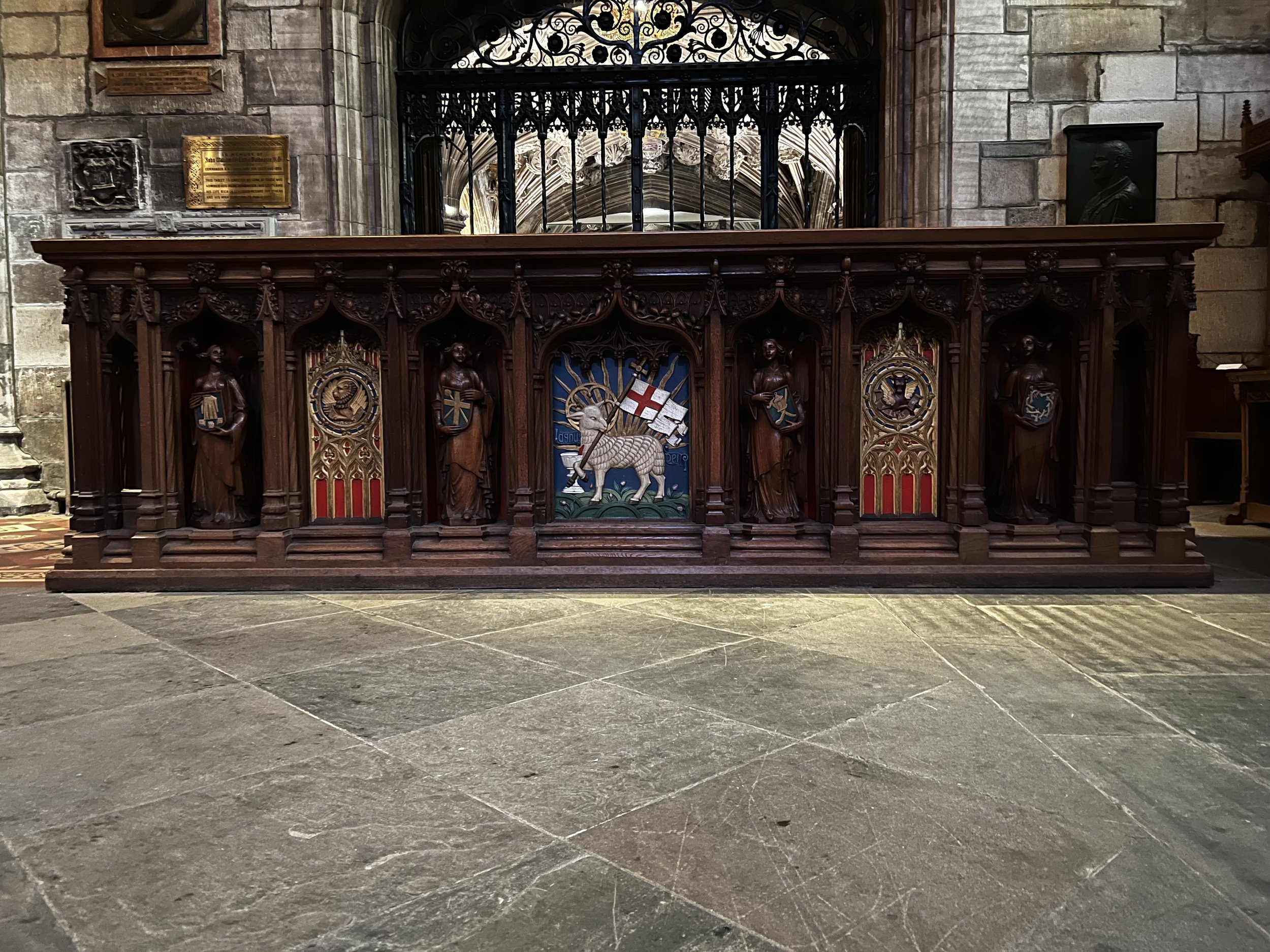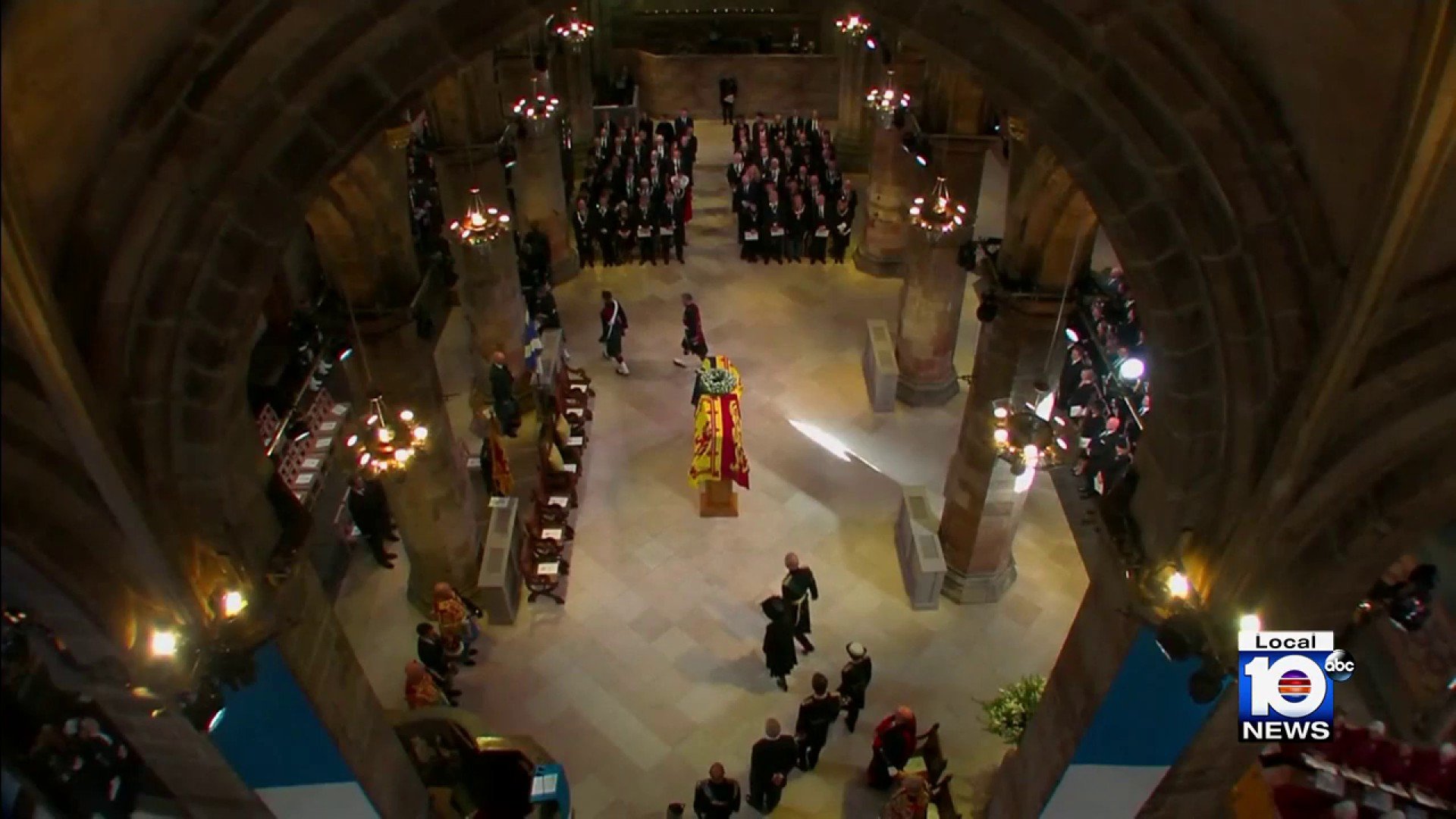A Red, Red Rose
“O my Luve is like a red, red rose
That’s newly sprung in June;
O my Luve is like the melody
That’s sweetly played in tune.
So fair art thou, my bonnie lass,
So deep in luve am I;
And I will luve thee still, my dear,
Till a’ the seas gang dry.
Till a’ the seas gang dry, my dear,
And the rocks melt wi’ the sun;
I will love thee still, my dear,
While the sands o’ life shall run.
And fare thee weel, my only luve!
And fare thee weel awhile!
And I will come again, my luve,
Though it were ten thousand mile.”
Awoke Thursday morning (Dec 8) to light dusting of snow. Beautiful. https://www.youtube.com/watch?v=eHYrlOP1I98
They have a saying in Scotland:
“If you don’t like the weather, wait 5 minutes.”
But what if we do like the weather? We quickly showered, dressed, and bundled up to walk to St Giles for a tour…which we did across freshly fallen snow…but under mostly sunny skies. 🥹
I guess that’s why they also say:
“In Scotland we can have four seasons in one day.”
The unique crown-shaped spire of St Giles Cathedral is an iconic part of the Old Town skyline.
Given its prominent position, it’s hard to imagine that St Giles’ was built on the very eastern edge of Edinburgh and pre-dates most of the Old Town. We have attended two Sunday services, but never walked around the cathedral until today. This morning’s 10:30 tour was led by Martin. Imagine Grandpa Jim—similar in age and personalty—both sharing a soft-spoken, friendly & warm demeanor. Now mix in a wicked British sense of humor, and you have Martin, the ideal tour guide.
With a story dating back to 1124, there are surely entire books dedicated to the history, architecture, and iconography of this historic treasure—but here a few fun anecdotes from our tour.
The cathedral has seen much change over the years. Following the Reformation, all the original stained glass was removed because they were seen as forms of idolatry. Today the cathedral is considered Edinburgh’s “parish church,” and so—much like Westminster in London—various memorials have made their way into the church, along with the return of stained glass.
Pictured above is the Robert Burns Window above the West Door. Burns is perhaps best remembered as a humanitarian poet who wrote against oppression and injustice. His lyrics condemn “man's inhumanity to man” and call for the brotherhood of mankind. The finished window is split into three sections depicting the principal themes of the poet's work—love of nature (bottom), love of humanity (middle), and love itself embodied by the emblem of the rose (top)—a nod to his A Red, Red Rose poem.
There is so much to say about these panes, but the most interesting to me is that the image on the right is of King David I (king from 1113 to 1153). The king holds the church in his hand because he commissioned its construction. The middle pane is of St Giles, the cathedral’s namesake. Giles was a hermit who lived in solitude deep in the forest in southern France, his sole companion being his beloved red deer. When the king's hunters shot an arrow at the deer, Giles blocked it with his hand—both depicted in the image. Afterwards St Giles became a patron of the physically disabled. David's mother St Margaret is on the left.
The lectern—The symbolism of the eagle is derived from the belief that the bird was capable of staring into the sun and that Christians similarly were able to gaze unflinchingly at the revelation of the divine word. Alternatively, the eagle was believed to be the bird that flew highest in the sky and was therefore closest to heaven, and symbolized the carrying of the word of God to the four corners of the world.
The Pulpit with its ornately detailed carvings
A stunning alter, the four carved figures depicting each of the four Gospels.
This is the entrance to the Thistle Chapel, built expressly for the Order of the Thistle. Pictured in the center is the order’s patron saint: St Andrew and his X-shaped cross.
The chapel is simply stunning—rivaling Rosslyn Chapel in terms of extravagance and iconography. Like Rosslyn Chapel, it’s nearly impossible to take it all in.
St Andrew once again adorns the most prominent position in the chapel’s ceiling.
The Order’s Royal Coat of Arms. The unicorn is well and truly the official national animal of Scotland. These proud, untameable creatures are fiercely independent and famously difficult to capture or conquer, which will sound familiar to anyone who has read their Scottish history. Even though unicorns are mythological, Scots have always felt drawn to what they represent. The lion is the symbol of England. The coat of arms in the middle show two Lion Ramparts of Scotland in red (a little confusing that Scotland has a “Lion Rampart of Scotland” in addition to the unicorn). The three elongated lions represent England and Wales. The harp in blue represents Northern Ireland.
Now, the interesting things is, the very same coat of arms will be a mirror image in England, because icons on the left are seen as more honoring (being seated at the right hand of God). Because the Thistle Chapel is in Scotland, the image gives Scotland prominance.
The Scottish carving on the left of the monarch’s seat (to the King’s right), of course.
The English carving on the right.
Each member of the Order has an assigned seat. Their seat is adorned with a unique sword and has a unique crown resting above the hilt. Above the crown is an adornment that the current seat holder selects. For example, the person whose seat is at the far right is in the legal profession and has chosen Lady Justice’s scales as their icon.
Each person who has ever held a seat has their own coat of arms applied to the wall behind their seat. In this way you can tell how many people have occupied each seat over the years.
As was the case in Rosslyn Chapel, Scottish builders like to hide angels playing bagpipes among the adornments. In the Thistle Chapel there are three.
Back in the main cathedral, looking west toward the Robert Burns Window. It is surprising given their appearances that the western end is far old than the eastern.
The orientation of Christian churches reflects the historically documented concepts that one should turn eastward to pray and the architectural and liturgical principle that temples and churches should be constructed facing east. This large window is on the East Wall and the images—including Christ’s ascension into heaven—reflect the prominence of this position. The symbol of the Trinity near the top is frequently used by St Giles on its printed and online materials.
Renowned Scottish stained glass artist Douglas Strachan was commissioned by St Giles to complete this stunning window on the North Wall. Among other things, the window depicts Jesus walking on water and calming the storm. More than any other window, this one seems to have “movement” thanks to the use of smaller, swirling shapes. It’s really a stunning piece.
At the end of the tour, Amanda asked Martin if he knew where inside the church Queen Elizabeth II had laid in repose back in September.
He was among those fortunate enough to have paid his respects to the Queen, so he was able to show us the exact spot—which is where Amanda is standing in the picture above. Thank you Martin for the wonderful tour!
Since its Christmas, we’ll end our tour of St Giles Cathedral with a stained glass window of the Nativity.
We rounded out the afternoon with an escape room called The Department of Magic. We’re very sorry to report that the room we chose was rather difficult and we failed in our quest. (Apparently, in the Uk they are less inclined to “just let you win” than they are in the US. 😒) Unfortunately, the Dark Lord has escaped and we’re to blame.
Cleanse our auras with pictures of cute animals:

























